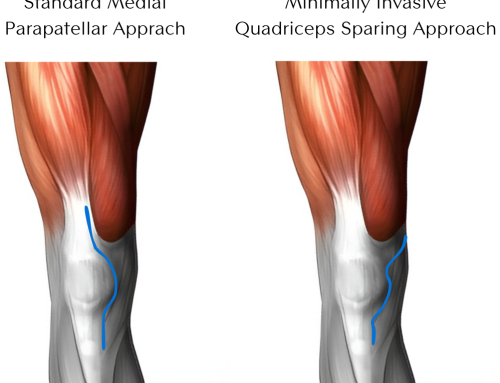
Knee replacement surgery, also known as knee arthroplasty, is a common procedure often associated with advanced age. However, the question of how young is too young for this procedure is becoming increasingly relevant. The trend of performing knee replacements in younger patients is on the rise, and the numbers are increasing every year.
Types of Knee Replacements
There are three main types of knee replacements: partial knee replacements, patellofemoral knee replacements, and total knee replacements.
- Partial Knee Replacements (PKR): In a PKR, only one knee compartment is resurfaced. It’s a less radical procedure with faster recovery times. When it eventually wears out years later, you retain the option of having a total knee replacement (TKR). Outcomes are extremely positive across all demographics, especially when a specialist performs your PKR.
- Patellofemoral Knee Replacement: This procedure involves replacing only the under-surface of the kneecap and the front of the thigh bone. It’s less invasive than a total knee replacement and is often suitable for younger patients.
- Total Knee Replacements (TKR): A TKR resurfaces all the knee compartments. The older you are, the happier you’ll likely be with your new knee[^4^]. However, the younger you are, the more you’re likely to ask of your knee implant, which could lead to faster wear and tear.
Risks of Having a Knee Replacement Too Young
The primary risk of knee replacement at a young age is the potential for the implant to wear out. No implant is indestructible, and the more active you are, the faster your implant is likely to wear out. When that happens, you may have to revise a TKR (giving it a major overhaul), but the results may not be as good as the original implant.
Current Longevity of Implants
The longevity of knee implants has significantly improved over the past couple of decades and is now likely to last many years. However, the exact lifespan of an implant can vary depending on several factors, including the patient’s age, weight, activity level, and overall health.
Improvements in Implant Technology
The field of knee replacement has witnessed significant advancements in recent years, particularly in robotic technology and highly crosslinked polyethylene.
Robotic Technology in Implant Positioning
Robotic technology has emerged as a game-changer in knee replacement surgery. It has been instrumental in improving the accuracy of implant positioning, which is a critical factor in the success of the surgery and the longevity of the implant. Robotic-assisted surgical procedures, such as unicompartmental knee arthroplasty, have shown promising results in better outcomes and longer implant lifespans1. The use of robotic technology not only enhances precision but also reduces the risk of human error, thereby improving overall surgical outcomes2.
Highly Crosslinked Polyethylene
Highly cross-linked polyethylene (HXLPE) is another significant advancement in knee replacement technology. This material is used to manufacture the plastic spacer that sits between the metal components of the knee implant. HXLPE is more durable and resistant to wear compared to conventional polyethylene. This increased durability can potentially extend the lifespan of the knee implant, making knee replacement a viable option for younger patients3.
The use of HXLPE in knee implants has been associated with a lower rate of osteolysis (bone loss) and a reduced need for revision surgery due to implant wear. This makes it a promising material for knee implants, particularly for younger, more active patients who are likely to put more stress on the implant.
Conclusion
In conclusion, the decision to undergo knee replacement surgery is a personal one that should be made in consultation with your healthcare provider. While age is a factor to consider, it’s not the only one. Your overall health, the severity of your knee problems, and your lifestyle should also play a significant role in your decision.




